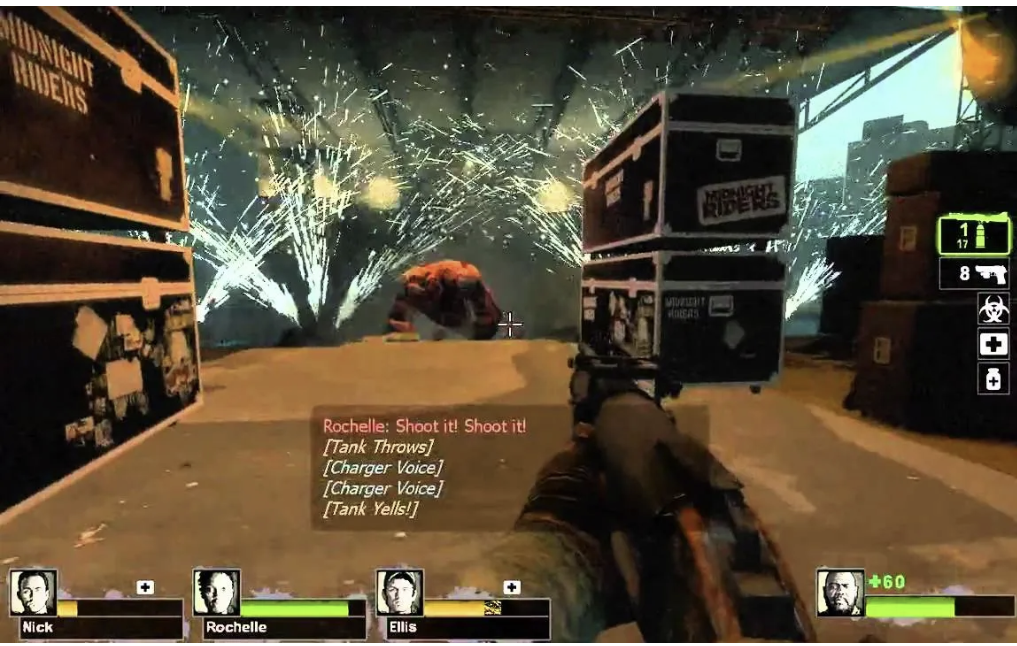2D Level Case Study: The Impossible Game

Introduction
I evaluated “The Impossible Game” by FlukeDude Limited, a 2009 two-dimensional, single-button platformer originally for Xbox 360. The game challenges players to jump over obstacles and complete levels. Initially featuring just one level, it has since expanded to four in the Steam version, which I used for this review.
Simple Instructions
So I tried the first level of this game, right? And it was super smooth and easy to get into. Maneuvering that jumpy square thing was a breeze – hit the ‘jump’ button, and boom! It responded on cue with perfectly timed jumps. Cool stuff huh? Anyways, here’s all you need to know about the rules of the game.

As for the simulated space and physical reality of the game, it felt like actual physics were used in the game real-time. For example, once you touch the triangles, you instantly die. Touching the black boxes or just touching the ground in general, you keep on moving, thus making the collision behavior and gravity act as how they would do in a regular platformer with correct physics being used. Down below are a couple of screenshots that I took demonstrating the game, both when the player hits the triangles and when the player lands on one of the black squares.


Immersive Music
In the gaming world, intricately designed features work together to create an immersive environment, with in-game music playing a pivotal role. As players progress through levels, the music’s rhythm and pace adapt to match the jumping actions and increasing difficulty, maintaining a seamless audio-visual connection that heightens the experience. Simple yet sophisticated game mechanics, like jumping, maintain freshness in gameplay and prevent repetitiveness. These intuitive controls, paired with carefully timed pacing, allow for extended play without losing the player’s interest, ensuring consistent engagement and adaptable gameplay over time.
The design layouts contribute significantly to the fundamental essence of the game through their refined graphics and basic operational mechanics, crafting an integrated fusion. The game features base-level adversarial figures in a form of uncomplicated grey triangles set against a deadly black floor, all encompassed within a singularly blue background setting. This simplicity runs parallel with the direct responsive mechanics and instant feedback incorporated in the game’s framework. Highlighted below is an exhibit embodying these elements, specifically depicting how the lethal black floor ultimately leads to player termination against its contrasting stark blue backdrop.

Complex Mechanics
The game’s design progressively introduces essential mechanics, starting with easy obstacles and jumps to build timing and movement awareness. It also uses music as a novel teaching tool; crescendos guide players, emotionally engaging them and signaling progress. Interactive black squares throughout the levels aid in navigation, offering a reliable reference for actions like jumping, crucial in mastering the game’s increasingly complex and fast-paced later stages.
The pacing of the level design is quick and has great timing with the level as it progresses. The difficulty of the level increases, with more jumps being needed and being more precise on the jumps too. There are also more obstacles, including more attack triangles being together in succession more times. This next picture shows a trio of triangles together, which starts occurring during the middle of the level.

The level paces the introduction and layering of new content or challenges by changing the beats of the music during major sequences of jumping, and towards the end of the level, the screen fades to black as you beat the level.
Conclusion
From start to finish, the game does a perfect job of introducing simple elements in the very beginning and gives you the impression that those are key mechanics for the entire level, so it just builds on more and more complex obstacles as you go further in the level and in the other levels of the game as well.
If you have any ideas or feedback, feel free to comment or reach out. Follow on the usual socials and/or like and Subscribe to me and the newsletter.

Join me for an insider’s look at Left 4 Dead 2, a captivating multiplayer FPS where you play as either survivors navigating to safety or infected zombies hunting them down. I recently played ‘The Concert’,

The undeniable influence of video gaming on the hip-hop industry is apparent through the incorporation of gaming references in lyrics, the visual aesthetics of music videos, and the collaboration between artists and developers.